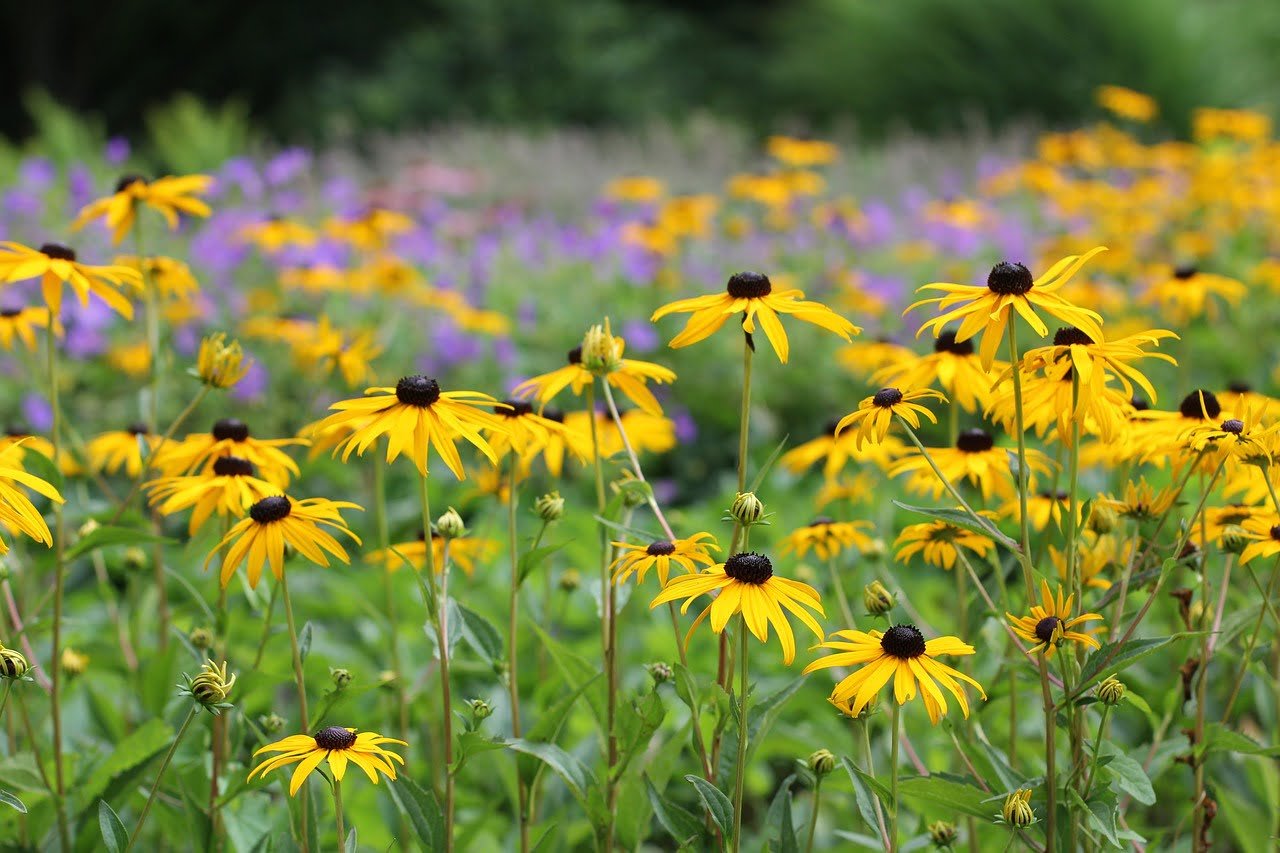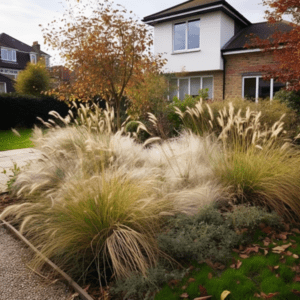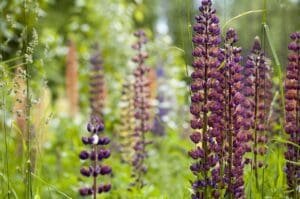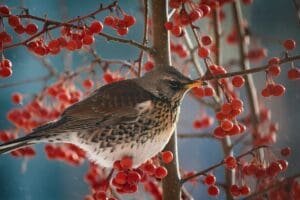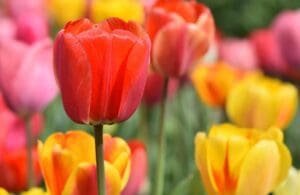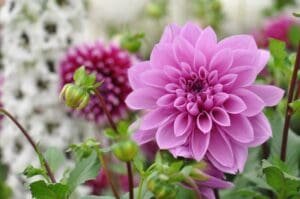Perennial plants are the backbone of any naturalistic or prairie-style garden. Their enduring presence allows gardeners to experiment, contrasting different flower forms to weave a tapestry of rhythm and flow.
Let’s delve into some of the top perennial choices that will infuse your garden with this timeless style.
This post contains affiliate links which means we may make commission from any qualifying sales with no extra cost to yourself.
10 Perennials for Your Naturalistic Style Garden
- Echinacea Purpurea (Purple Coneflower)
- Nepeta ‘Walkers Low’ (Cat Mint)
- Rudbeckia (Black-Eyed Susan)
- Salvia Nemorosa ‘Caradonna’
- Geranium ‘Magnificum (Purple Cranesbill)
- Aquilegia ‘Blue Barlow’
- Eryngium (Sea Holly) ‘Big Blue’
- Achillea Filipendulina ‘Cloth of Gold’
- Aster × frikartii ‘Mönch’
- Helenium ‘Moerheim Beauty’
Top Tip
When arranging your perennials, consider not just their bloom time and colour, but also their texture and height to achieve a harmonious and dynamic naturalistic garden throughout the seasons.
- In addition to these perennials, selecting the right ornamental grasses is crucial for achieving that naturalistic garden look. Discover our top 10 recommendations here: 10 Of the Best Ornamental Grasses for Your Naturalistic Garden
- For deeper insights into crafting the perfect naturalistic garden design, explore our related articles here: What is a Naturalistic Style Garden and Advice on Creating Your Own
1.Echinacea Purpurea (Purple Coneflower)
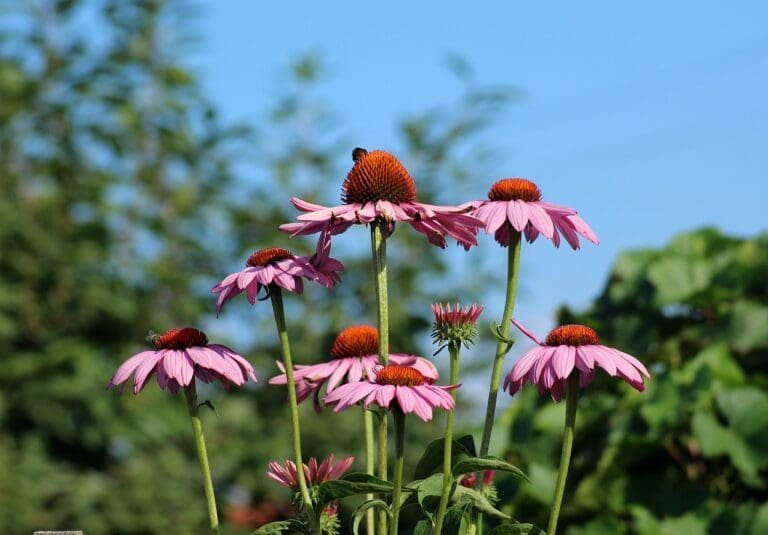
A staple in naturalistic gardens, the Echinacea Purpurea, commonly known as the ‘purple coneflower’, boasts large, bright daisy-like flowers that grace gardens from June until September. These hardy plants prefer well-drained soil and love basking in sunny spots. For a longer blooming period, deadhead them regularly, but remember to leave the seed heads during autumn – they’re a visual treat and the birds are quite fond of them.
Height: 120cm | Spread: 50cm.
2. Nepeta ‘Walkers Low’ (Cat Mint)
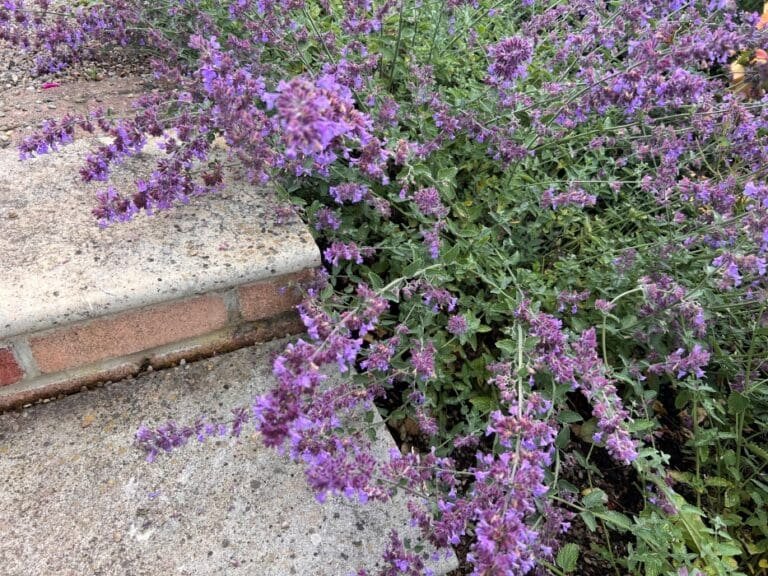
With silvery-green leaves and captivating deep violet flowers, Nepeta ‘Walkers Low’, or cat mint, is a delightful addition to any garden. Perfect for edging paths or fronting borders, this plant thrives in both full sun or partial shade, and its flowers, from early summer to autumn, are a butterfly favourite.
Height: 60cm | Spread: 50cm.
3. Rudbeckia (Black-Eyed Susan)
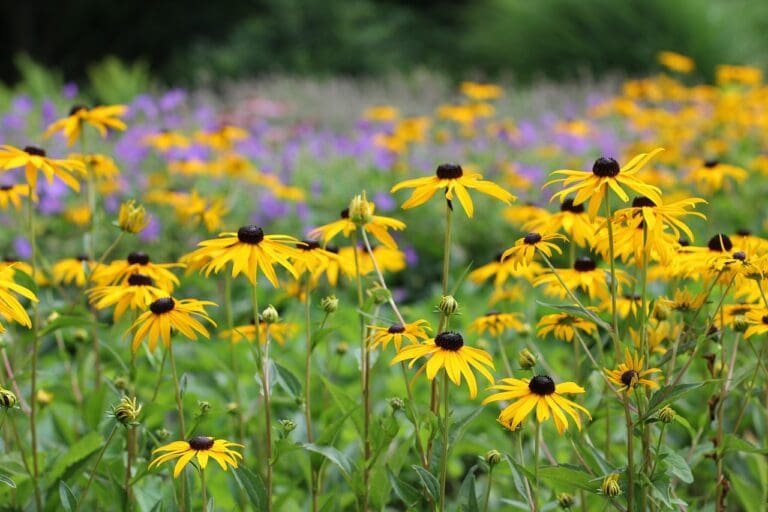
Meet Rudbeckia, the golden-yellow daisies often dubbed ‘Black-Eyed Susan’. A favourite of bees, these plants revel in a sunny spot and have an extended flower season. To maintain their height and reduce staking, give them a Chelsea Chop. Pairing them with ornamental grasses and the purple of salvia caradonna enhances their beauty.
Height: 85cm | Spread: 50cm.
4. Salvia Nemorosa ‘Caradonna’
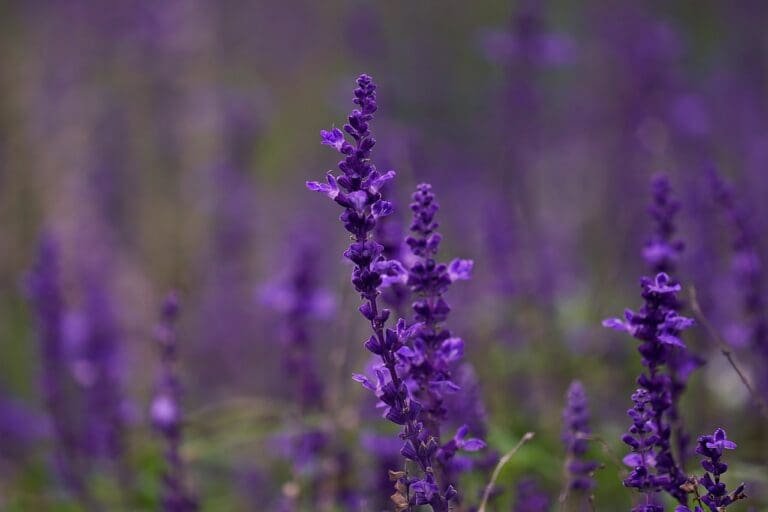
Salvia Nemorosa ‘Caradonna’ is a dependable clump-forming perennial. Its spires of nectar-rich purple flowers, blooming from June to October, are a magnet for pollinators. While they aren’t too fussy, they do appreciate a sunny, well-drained spot in your garden. A gentle prune after flowering keeps them looking their best.
Height: 50cm | Spread: 30cm.
5. Geranium 'Magnificum (Purple Cranesbill)
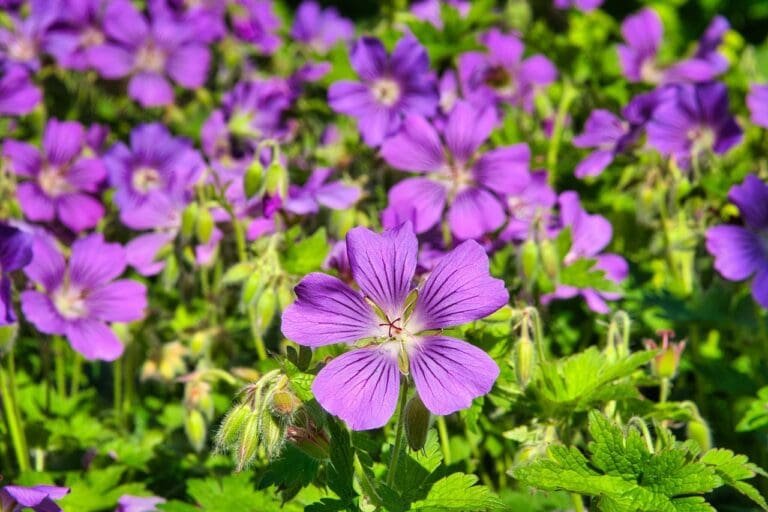
The hardy geraniums, particularly the ‘Magnificum’ variety, known as Purple Cranesbill, are a garden’s dream. Low-maintenance and vibrant, they offer a splendid ground cover and flourish best in full sun, although they’re tolerant of some shade. Regular deadheading encourages a more prolonged display.
Height: 70cm | Spread: 70cm.
6. Aquilegia ‘Blue Barlow
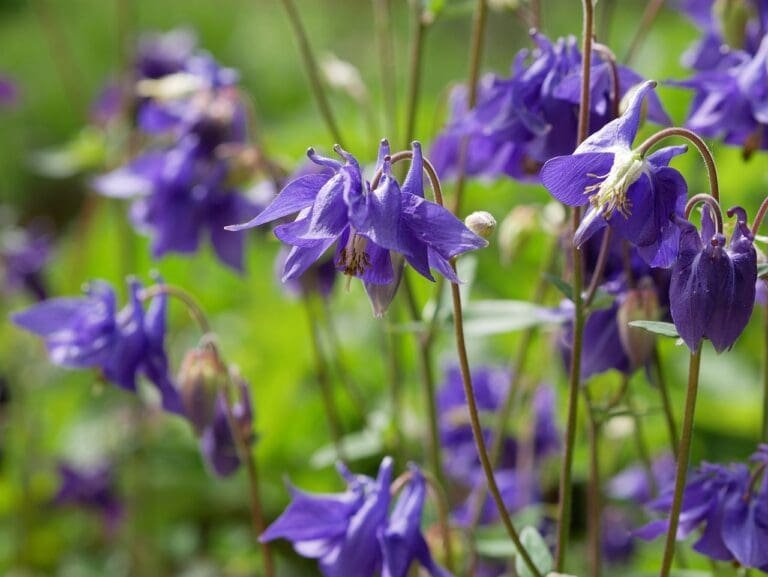
For a burst of late spring charm, Aquilegia ‘Blue Barlow’ is the go-to. These plants produce dainty, deep blue flowers that pair stunningly with emerging perennials and grasses. Loving both full sun and partial shade, they’re also a treat as cut flowers. Bonus: They often self-seed, ensuring their return year after year.
Height: 80cm | Spread: 30cm.
7. Eryngium (Sea Holly) ‘Big Blue’
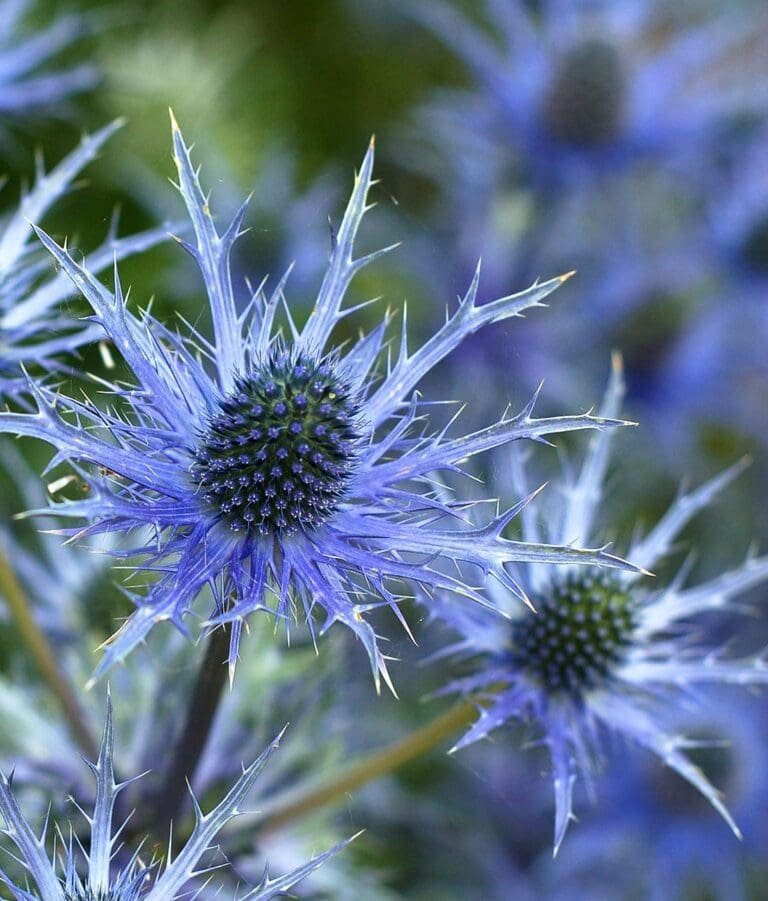
From the Eryngium family, ‘Big Blue’ stands out with its silvery-green foliage and unique cobalt-blue thistle-like blooms. These plants create a striking contrast when placed amid ornamental grasses. They’re uncomplicated to grow and pollinators absolutely love them.
Height: 90cm | Spread: 50cm.
8. Achillea Filipendulina - 'Cloth of Gold'

Achillea ‘cloth of gold’ is all about contrast. Its flat-headed form provides a lovely juxtaposition against other garden plants. Blooming from June to September, it’s a butterfly’s delight but a word of caution: it can be toxic to dogs. It might need staking and dividing during its growth phases.
Height: 120cm | Spread: 50cm.
9. Aster x frikartii - 'Monch'
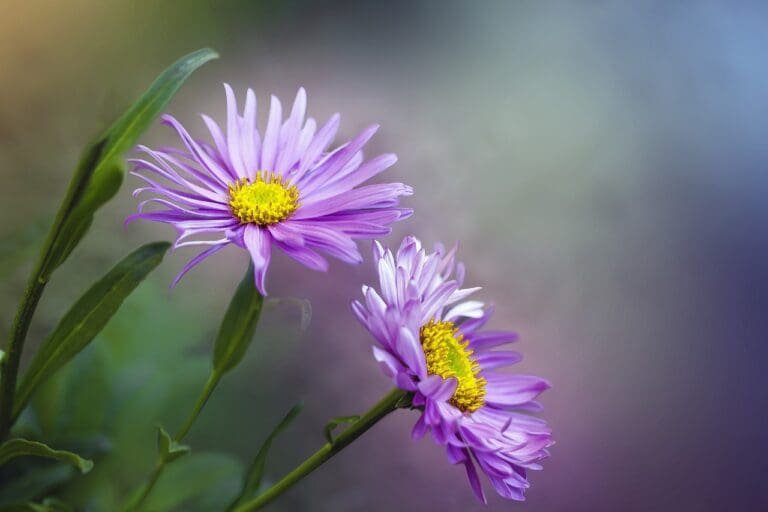
For a touch of late summer glamour, Asters, especially the ‘Mönch’ variety, are perfect. Clusters of daisy-shaped flowers draw in bees and butterflies in abundance. They thrive in well-drained soil and should be pruned back after their flowering peak in late autumn.
Height: 80cm | Spread: 50cm.
10. Helenium - 'Moerheim Beauty'
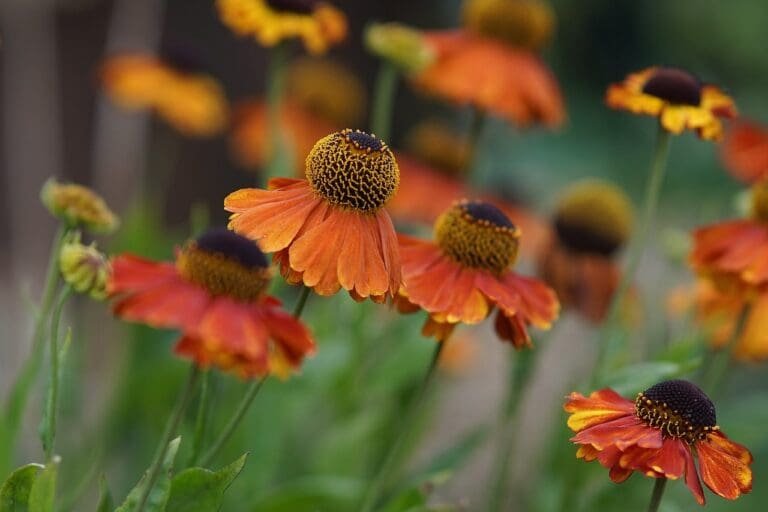
Envision warm orange hues mingling with ornamental grasses – that’s the charm of Helenium ‘Moerheim Beauty’. These plants cherish a sunny position in well-drained soil but don’t take too kindly to drying out. A post-flowering trim keeps them looking fresh, and they can be divided during autumn or spring for rejuvenation.
Height: 80cm | Spread: 55cm.
The Beauty of Naturalistic Style Gardens
Naturalistic gardens are an enchanting escape from the manicured landscapes many are accustomed to. These gardens echo the wild beauty of nature, capturing its essence and tranquillity in every corner.
Each element, from the soft sway of grasses to the lively bursts of perennial blooms, is thoughtfully integrated to mimic natural ecosystems. Instead of rigid symmetry, a naturalistic garden revels in the unexpected.
Its pathways invite you to wander, allowing you to stumble upon hidden nooks and captivating plant combinations. The seasonal transformations these gardens undergo are pure magic, with each season painting a different yet equally mesmerising tableau.
Such gardens evoke an emotional response, reminding us of our intrinsic connection to the natural world and its harmonious dance of life, growth, decay, and renewal.
Frequently Asked Questions
Q. How can I make my garden look good all year round?
To ensure year-round appeal, select a mix of plants that have different flowering and interest periods. Incorporate evergreen shrubs, ornamental grasses, and plants with attractive bark or winter berries. Also, consider plants that have interesting seed heads and can be left unpruned over winter.
Q. How do I make my garden look wild?
To achieve a wilder look, choose native plants and let them grow a bit more freely instead of heavily pruning. Introduce wildflowers, let some areas of grass grow longer, and incorporate more unstructured plantings rather than formal beds or borders.
Q. What is a naturalistic landscape?
A naturalistic landscape mimics nature, focusing on native and local plants in a more informal and organic arrangement. The goal is to create a garden that feels like a natural ecosystem, promoting biodiversity and a harmonious balance of plants and wildlife.
Q. How do you make a natural flower bed?
Start by removing any existing turf and weeds. Then, work in organic matter like compost to enrich the soil. Choose native flowers or those adapted to your region and plant them in groups or clumps, as they would appear in nature. Allow space between plants so they can grow and spread naturally.
Q. What is the least expensive way to landscape?
Budget-friendly landscaping includes using native or locally adapted plants (they require less water and care), repurposing or upcycling materials you already have, propagating plants from cuttings or seeds, and using ground covers like mulch to reduce weed growth and retain soil moisture.

